
Question: If Lanning really had leaped from that distance, wouldn't he be unrecognizable upon impact and not with only a little bit of blood coming from his mouth?
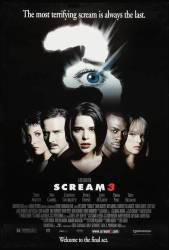
Question: Was Roman just playing dead in the coffin or was it a dummy? Hard to believe that he could be pretending because Gale checks his pulse.
Answer: No it was Roman. There is a technique you can do where if you apply pressure on the correct artery you can stop the pulse. EXTREMELY dangerous though.

Question: What kind of car did Ashton Kutcher borrow from his friend at the end of the movie?
Answer: 1971 Plymouth Satellite hardtop. You can see the Satellite's blue/white/red flag emblem on the grill.

Question: In the movie they state the colonel cannot be charged because the crime was committed outside of the United States. All active members of the US military like the colonel are subject to the uniformed military code of justice no matter where the crime was committed, so how did the colonel prevent the military justice system from being able to charge him?
Answer: You are completely correct. This is a clear mistake, the colonel could (and would) most certainly be charged for his crimes.
Though unlike the movie, it's not up the attorney to decide if a military member gets charged, it's up to the judge advocate general.
Actually it's not a mistake. The colonel is not a member on active duty in the service. He's ex military. He's the one running the contractor group that carries out the senator's dirty deeds.
Answer: Receiving retirement pay and being in the IRR confers jurisdiction, even over retired military personnel.
Answer: "The colonel" was not active duty military, BUT as a retiree he is still subject to the UCMJ.
How are retirees subject to the UCMJ?
They're not, generally. Some service members who've served for more than 20 years but less than 30 are or were subject to the UCMJ. There was a recent legal opinion overruling this though. https://www.military.com/daily-news/2019/08/09/new-bombshell-legal-opinion-says-military-retirees-cant-be-court-martialed.html.
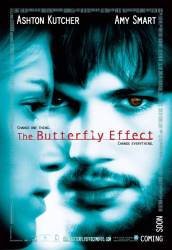
Question: I'm guessing that Evan can travel back to "memories" an infinite amount of times as he has been to the junkyard and the basement memories at least twice, but what I don't get is why, after he saw the horrible repercussions of giving Lenny the shard which led to the psychotic brother's death, why didn't Evan just NOT give Lenny the shard, but still give the bro the moving motivational speech that made him rethink the burning of the dog? Then the dog would be safe and the bro wouldn't be killed traumatically, damaging Kaylee? Why didn't he keep that bit that seemed to work out, but not give Lenny the weapon?
Answer: The point of the movie was that, no matter what he did and how he tried to change things, they always ended up bad. If he went back and did that, something unforseen would have happened to make things terrible. Evan realized that everything bad that happened to them was because of him. He then decided the only safe way to make things right is if he just took himself out of their lives all together. That's the logic the filmmakers went by, if you don't want to accept that, then you will just have to consider it a plot hole.
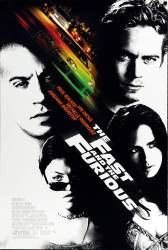
Question: Jessie is using a car design program from the Supra. Does anyone know either what the program is or where to get it?
Chosen answer: It's not a real program, just some CGI. As well as when the pictures of "what it could look like" show up. Those are existing pictures of the car.

Question: Is there an alternate ending? Did Ving Rhames ever wear a sweater in the last scene?
Answer: I have repeatedly told people he wore a sweater. There has to be one, more original, that has him in a sweater. I remember almost like a Easter yellow.
It should be noted Rhames does wear what looks like a yellow sweater in "Pulp Fiction." Although I wouldn't call it Easter Yellow.
I saw Ving Rhames in a navy crewneck sweater in the closing shots of this film.
I also can swear I saw an ending with Ving Rhames wearing a sweater. This would be in keeping with Klein asking him earlier in the film if he ever wears sweaters.
Answer: My wife and I also believe that Agent Duane Stevenson wore a sweater at the end of the movie on the VHS version. The DVD version switched Duane with suit, white shirt and tie - no sweater.
Answer: I saw Ving Rhames in a navy crewneck sweater at the end of movie shot.
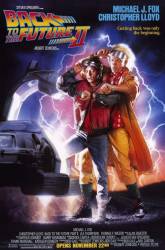
Question: In the alternate 1985, there is an alternate Biff, Lorraine etc. Shouldn't there also be an alternate Marty and Doc?
Answer: Yep, and there is, but they're both elsewhere. Doc's been committed to an asylum somewhere. When Marty first meets the alternate Biff, Biff tells him that he's supposed to be in Switzerland at boarding school - that's where the alternate Marty is.
Wouldn't someone probably see Doc and report that he escaped from the asylum?
Maybe, but no way to be sure, and they're not around long enough for that to be an issue anyway.
Answer: Doc would most likely not have been seen by anyone, as the time he spent in the alternate 1985 was primarily inside the DeLorean, at a boarded-up library, graveyard, and his lab (and all at night too) so most likely not spotted by the public.
Even if someone had seen Doc, it could've been dismissed as someone who looks like him. Even if they did report his escape, someone would either call or go to the asylum and verify Doc was still there.
I also don't think that Doc Brown ever achieved celebrity status prior to his being committed, so how would the average person even recognize him as some obscure scientist who was put away?

Question: I have heard a rumor that Gibson plans to produce both a prequel and a sequel to The Passion. Does anyone know if this is true or have any information?
Answer: There is going to be another movie; The Resurrection, which could shoot as early as the summer of 2018, the release date will be some time in 2019-2020. I previously watched this movie and felt it left on a cliff hanger, (tho I already know what happens in the end) I figured there has to be another one coming.
Answer: No idea about a sequel, though the only "prequel" idea I know about is the story of the Maccabees (the story of Haunakah (sorry for the spelling)).
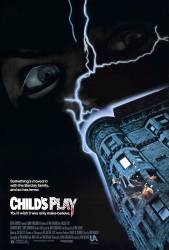
Question: When Chucky confronts John, he say he "prepared" for it, meaning he made the voodoo doll himself, but then he says John shouldn't tell people where he hides them. Was this a mistake during production?
Chosen answer: This isn't a mistake. John made the voodoo doll himself. When Chucky said he was "prepared" for it, he meant that he was prepared to do whatever it takes to get information from John about his being wounded. Even killing him as we see.
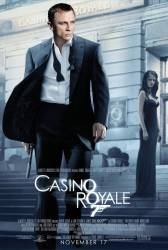
Question: What was the *exact* recipe for Bond's cocktail in the casino?
Answer: From the novel: "Three measures of Gordon's, one of vodka, half a measure of Kina Lillet. Shake it very well until it's ice-cold, then add a large thin slice of lemon peel."
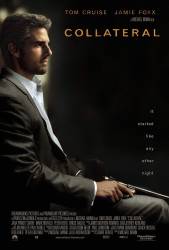
Question: I noticed from the previews that this movie looks very different. What is it? Is it a digital camera that has been used? Or no lighting effects used? The movie really has a "behind the scene" feel.
Chosen answer: It was shot with a digital camera. IMDB is a great place to answer questions like this. Go to *Technical Specifications* in the *Other Info* section of the menu on the left hand side of the screen. In an interview in American Cinematographer, Michael Mann said that as far as he was aware, this was one of the first movies to attempt to make a "look" out of digital video rather than trying to make Digital Video look like film. This approach meant the movie could be shot in the low-light scenes of urban desolation Mann wanted - because Digital reacts much better to low light than film. The approximately 20% of the picture that was shot on film was mostly, according to Mann, the portion set in the "Fever" nightclub - because this is the scene with the brightest lighting states, a condition in which Digital Video does not perform as well.
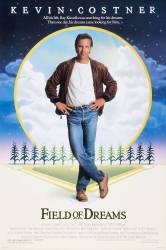
Question: At the end of the movie, the Voice is credited as Himself. Who was really responsible for doing the voice that sent Ray on his journey?
Answer: It was actually his own voice (Kevin Costner) that sent him on the journey. At the end of the movie there's even the part where Ray is recalling the voices he heard and turned to Shoeless Joe Jackson and says, "It was you". At which point Joe Jackson turns around and says, "No Ray. It was you".

Question: The blonde girl Noah hooks up with - is that Ali, the girl Kevin likes?
Answer: Yes it is.

Question: What is Jason doing with the tape and the car window, in the scene before he drives Marie to Eamon's house?
Answer: He taped the door edges so they wouldn't leave fingerprints on the car.
Chosen answer: He is taping up the car window that he broke in order to keep some of the winter weather out.
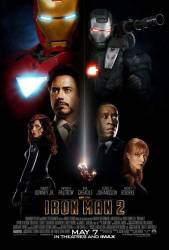
Question: Why are Justin Hammer's hands dirty when he is sitting with Vanko in the hangar, after he busted him out of prison?
Chosen answer: It is stated in the commentary that Sam Rockwell wanted his character to have a spray tan, making his hands an orange color.
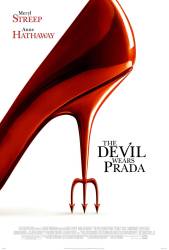
Question: Can anyone please explain to me the deal about Nigel not getting a job in Paris? He thought he got promoted then Miranda picked someone else or something and he says something like 'when the time is right, she'll pay me back'. I've seen this film loads of times but I've never fully understood what happened. Thanks.
Chosen answer: Miranda was going to be replaced by Jaqueline and forced to retire. Miranda worked a deal to give Nigel's new job to Jaqueline instead. Since Jaqueline now has a job she wants, there is no one eager or qualified to replace Miranda. Miranda keeps her job. Nigel doesn't get a new job and must remain with Miranda. Miranda gets what she wants, Jaqueline gets what she wants, Nigel gets screwed, but maintains the (most likely futile) hope that Miranda will pay him back by some other means in due course.
Answer: Nigel was going to be James Holt's partner But Miranda made it so Jacqueline got or instead so Miranda could remain Editor in Chief at Runway.

Question: When Manolo and Joaquin start fighting the wild boar, General Posada only sees Joaquin confronting the boar before he is knocked unconscious. Thus, he never sees Manolo fighting the boar like a matador. When the general recovers, he believes Joaquin defeated the boar and not Manolo. Despite the townsfolk being impressed by Manolo's action, why does no one, including the nun who thanks Manolo for saving her life, speak up and tell the general what actually happened? Why don't they confirm to the general that Manolo fought and defeated the boar?
Chosen answer: There was probably too much panic from the rampaging animals.
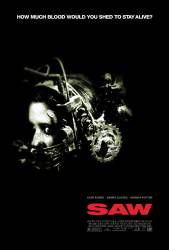
Question: This question applies to the whole series. Why do some of the people who actually manage to survive Jigsaw's traps end up working with him instead of either helping capture him or killing him and insuring that no more innocent people get killed?
Answer: Jigsaw's traps would more than likely leave a person mentally unstable, which could result in Stockholm Syndrome, a condition which involves a victim sympathising with their captor. In fact, after Lawrence Gordon escapes the bathroom after severing his own foot, Jigsaw nursed him back to full health, thus gaining his trust (this is shown in Saw VII). He also plays mind games on people, which is shown in a flashback in Saw III in which he convinced Amanda to side with him. In her unstable state of mind, she realised that he was the first person in her life she could actually relate to, and thus became an accomplice.
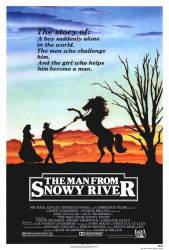
Question: How did they make Kirk Douglas have a peg leg? How was he able to walk that way?
Answer: This movie predates the more advanced CGI that would be used these days. In older films, actors portraying an amputee would have their leg (or arm) bent back and strapped to their body. A prosthetic peg leg would be attacked to the lower appendage. The actors were also filmed from strategic vantage points so the bent part of the limb didn't show. When Douglas is seen driving a wagon, the seat was probably constructed so that his lower leg fit into a hidden compartment and the peg leg was attached on top to be visible. Douglas also wore rather baggy pants, and that would help conceal his bent leg.
Answer: He'd certainly have a lot of internal injuries that aren't visible, would probably have more injuries showing than that trickle of blood, but wouldn't necessarily be "unrecognizable."
Phixius ★